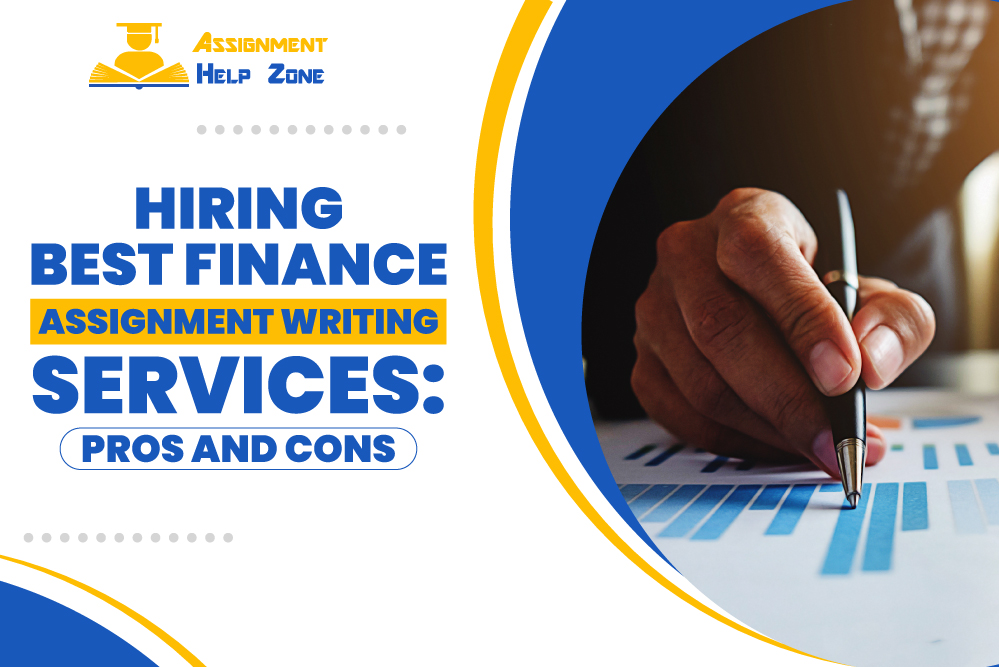Academic writing can feel like a challenge. There’s the content you have to master, the grammar and syntax you need to know, and all of the different ways people interact with their peers in class. But if you’re going to ace your next exam or paper—you need to ensure that your words are engaging and interesting.
Academic papers are one of the most important ways you can express your ideas and positively impact the world. It allows you to communicate complex ideas in a clear, logical manner that everyone can understand.
However, academic writing often sounds stiff and boring. If you’re not engaging your reader (that is, keeping them interested), they’ll stop reading before they finish your paper. The best way to make sure that happens is by ensuring your work isn’t boring!
In this article, assignment help has shared 9 valuable tips to make your academic writing engaging so that it appeals to your audience’s sense of curiosity and interest. Let’s start exploring what these tips are!
9 Strategies To Make Your Academic Writing Interesting
There’s nothing more boring than a paper that reads like a textbook. But here are some simple ways you can use to make your academic work more interesting. By following these tips, you’ll be able to communicate your ideas effectively with others outside their field of research!
1. Start With A Hook
A hook is a sentence or paragraph that grabs the reader’s attention and makes them want to continue reading. Hooks are a great way to grab the reader’s attention. They can be used to introduce a topic or summarize it, and they can also capture your reader’s interest so that he or she will want more information about what you’re talking about.
For example, if you read up on how global warming affects polar bears, you might find yourself interested in writing an academic paper on how humans impact these animals’ lives. In this case, one hook would be:
“Human-induced Global warming has been causing trouble for polar bears by melting their ice sheets.”
Another good hook might be: “Polar bears have been struggling with climate change because of their reliance on sea ice for hunting seals.”
2. Make Your Words Lively
To communicate your ideas in an engaging way, you need to make your writing lively. Here are some tips to do so!
● Avoid Passive Language:
Passive voice is often used in academic writing to show respect for the reader and avoid sounding brusque or rude. However, it can be not very clear, especially if you’re trying to convey a sense of urgency that the reader should understand immediately.
● Use Active Verbs:
Use active verbs instead of passives when appropriate. Active voice is more engaging. It’s easier to understand, and it makes you do my assignment sound more natural.
● Use Vivid Verbs:
Use vivid verbs with strong nouns and adjectives. They clearly show the actions and help paint a picture in readers’ minds. E.g; “Her eyes glowed with excitement;” rather than simply stating her eyes were blue/grey/green/etc., which could mean anything depending on the context!
● Avoid Complex Phrases:
Get your point across in the simplest way possible. Avoid using complex sentences and phrases unless you have a specific reason for doing so.
3. Vary Your Sentence Length.
A good way to keep your reader engaged is to vary sentence length. Too many short sentences might sound boring and too many long ones seems confusing. Varying sentence length is a good way to keep your reader on their toes because they won’t know what’s coming next!
Use transitions between sections of text to transition between ideas or sections of text easily.
You can also consider using subheads for sections of text (this is especially useful for longer papers)
For example:
- Compound sentences are two or more independent clauses joined by conjunctions (and, but, or). These are often used when several ideas need to be expressed at once. Here’s an example of a compound sentence: “I love my dog so much that I would do anything for him.”
- Complex sentences combine simple words into longer phrases by placing commas between each clause in the sentence. This style makes it easy for readers to understand how multiple ideas relate together—and provides extra space for additional content if needed!
4. Read Widely, But Don’t Imitate Wisely
Reading widely is important because it exposes you to different perspectives on issues and ideas, which can help inform your own writing and thinking about them as well. But it’s also important to remember not to copy from other sources without giving them proper credit (and checking their copyright).
If you want to write engagingly, don’t imitate the style of your favorite author. It will just look like a bad imitation and won’t help you in any way.
If you like the style of another author, read their work critically and analytically. Try to understand how they are using language, what effect it has on the reader, and why they have chosen to use it in this way. Then try out different ways of doing these things yourself—but always keep in mind that it’s your own voice that readers will respond to most strongly.
5. In Writing Use New Vocabulary Wisely
New words are a great way to make your writing more engaging. But they can also be a challenge when it comes to using them correctly. Learning to use new words in context is key if you want your writing to be clear and understandable by the reader. To help with this process, follow these tips:
- Try to find synonyms for the new words you want to use. This will help prevent repetition and make your writing more dynamic.
- If you have trouble finding them, try using a thesaurus or looking up their definitions online.
- Check the spelling of new words and make sure they fit well within their sentence structure (e.g., don’t just add an -s suffix). This will help ensure that readers understand what you’re trying to say instead of getting lost in some complicated sentence structure or word choice!
- Avoid using technical terms that might confuse others who aren’t familiar with them.
- Keep an eye out for keywords that show the reader what you want them to know about the topic, or where they need to focus their attention.
6. Find The Right Tone For Your Audience
Define your audience. Know that you have a broad or narrow focus before writing anything. If you’re writing for an academic audience, make sure it’s relevant to those people and their needs. If not, then you may be trying too hard and losing credibility in the process.
Use the right tone for your audience—and stick with it! Think about what kind of tone will be most engaging for each person who reads what you’ve written.
For example, if you’re writing something for a very technical audience, they’ll appreciate a direct approach. If you’re writing something for a general audience of non-experts. However, it’s better to use humor or other devices that will make your content more accessible.
7. Avoid Cliches And Ambiguous Words
Avoid cliches and ambiguous words. Clichés are overused expressions that don’t add anything new to the conversation. While ambiguous words can mean different things depending on where they’re used in the sentence.
There’s also nothing wrong with using more technical terms in academic writing than normal English speakers normally use. However, since we’re trying not only to communicate but also persuade our readers into believing in our arguments, research or conclusions, we want them to understand what we mean by those words!
That being said, having a vocabulary that’s too big can be just as problematic as having one that’s too small. The point of writing is to communicate effectively, and if your readers don’t understand what you’re saying because your words are too technical or unfamiliar then they won’t be able to follow along with your argument.
8. Add Humour Where Appropriate
Humour can be used to make a point. It can also be used to make a point more memorable, persuasive, and engaging. Add humor where appropriate, but never go overboard with sarcasm or other negative emotions.
If you want your audience to remember what you’ve said, don’t use humor as an end in itself. Rather, use it as a means of clarifying points or bringing them into focus. This will help them understand the message better than if it were just presented straight up with no jokes or funny anecdotes thrown in for good measure.
9. Edit, edit, edit!
It’s important to edit and proofread your work—don’t assume you’re done until you’ve verified it yourself! You should use a spellchecker, grammar checker, and plagiarism checker as well.
There are many ways to use these tools:
- Spell checkers can help catch mistakes in your writing. So you don’t have to deal with them later on down the road when it’s too late!
- Grammar checkers will point out common errors like run-on sentences or misplaced commas—which means less time spent fixing sloppy work!
- Plagiarism checkers can tell you if there are any issues with your content. Is it 100 per cent original or did you accidentally copy someone else work?
Final Thoughts
It’s important to remember that academic writing isn’t all about grammar and spell-checking. It takes more than just attention to detail when it comes to making your work engaging for the reader. Academic writing is about expressing your opinions and sharing them with the world. Every time you get to write an academic paper, it is a chance to leave behind a legacy that has an impact on the lives of others. So do your best when writing your next paper!


